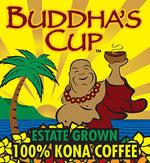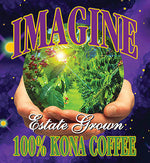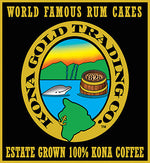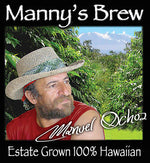I have measured out my life with coffee spoons. — T.S. Eliot
The value of coffee to life suggests we take it seriously. Flavorless coffee adds nothing to our day-to-day experience. Still, some might say world-class coffee adds only to our expenditures. Coffee connoisseurs hail 100 percent Kona coffee as one of life’s must-haves. But, the question arises, why is Kona coffee so expensive?
Is it hype, or is there something truly special about Kona coffee in Hawaii?
Fans say it is the ultimate Hawaiian coffee, famous for its smoothness, chocolate and fruit notes, and fresh, floral aroma. Its premium pricing and cult following make many wonder if the cost is justified.

Key Takeaways
- Strict regulations and hand-harvested methods add to the premium price of Hawaiian coffee.
- Local pests and challenging weather can quickly impact both the quality and yield of Kona coffee in Hawaii.
- Higher labor costs in Hawaii raise the overall price compared to most other coffee regions.
- Only a small fraction of coffee sold as Kona is genuine Hawaiian coffee from the official Kona region.
- Kona coffee, grown exclusively in the Kona district of Hawaii, is considered one of the rarest coffees in the world.
- Despite its cost, Kona coffee maintains strong global demand thanks to its unique flavor and reputation
Kona Coffee Beans Are Rare
Kona coffee comes from a place unlike any other.
The famous Kona Coffee Belt is a narrow strip on the western side of the Big Island, about 20 miles long and just one mile wide.
Coffee thrives only between 800 and 2,500 feet above sea level in this region.
This limited real estate means crops are naturally small. While countries like Brazil or Colombia produce mountains of coffee each year, the entire Kona region contributes only a fraction of a percent to the world’s supply.
Rarity comes from more than just geography. The Kona district’s unique microclimate brings sunny mornings, rainy afternoons, tropical warmth, and volcanic soil together to create perfect growing conditions.
Even a single tough season or sudden weather shift can shrink the harvest for an entire year.
No other spot on the island delivers what these coffee trees need. That’s why genuine Hawaiian coffee from the Kona Belt is both precious and prized, cup after cup.
Threats Decrease Kona Coffee Crops
Coffee cherry borers damage Kona cherries before harvest, sometimes leading farmers to skip an entire season to recover.
Coffee leaf rust (CLR) also poses a serious risk. This fungus can defoliate trees and cut yields by 30-80% during outbreaks in Kona farms, as outlined by the Hawaii Department of Agriculture. Rapid ʻōhiʻa Death removes vital native canopies. With 20–25% of ʻōhiʻa trees lost annually, local microclimates shift and affect nearby Kona farms.
Volcanic activity and acid rain further threaten soil quality and plant health. Combined events in some years have caused up to a 30% percent drop in Kona coffee yields.
Most Kona farms follow organic practices, limiting pest control to manual methods.
These methods cost more and are less predictable than conventional spraying. Together, these environmental and cultivation challenges help explain why Kona coffee remains so rare and valuable.
Hand Labor Raises Bean Costs
Kona coffee trees cling to steep, rocky slopes around Hualālai and Mauna Loa, 800 to 2,500 feet above sea level. Machines cannot navigate this terrain. Instead, skilled hand laborers pick only ripe cherries, sort them by hand, wash, sun dry, and handle small batch roasting. This craftsmanship takes time and money.
Across South America and Africa, mechanized farms slice labor costs by up to 50%.
In Hawaii, complex terrain forces manual harvesting. Plus, state labor laws require at least $14 per hour. ZipRecuriter reports average coffee farm wages in Hawaii at around $21 per hour. In contrast, workers in major producing countries often earn just a few dollars daily.
When equipment can’t replace human hands, and wages are fair, bean costs rise. That’s why Kona coffee commands a premium.
Is Kona Coffee So Expensive?

Once you even the playing field and consider the facts, the cost of a cup of Kona coffee decreases. A dollar for a memorable cup of 100% Kona feels reasonable when you understand what goes into it.
Pricing reflects real costs. Labor, land, yield, and processing all contribute. Hand-picking ripe cherries, hand-sorting, washing, sun-drying, and small-batch roasting add time and expense. In Hawaii, farm workers around $21 per hour on average in Kona farms, unlike mechanized operations elsewhere.
Genuine Kona coffee (1lb) often sells for $45 to $75, compared to $20 to $35 for blended or other premium origins.
For many enthusiasts, the unique flavor and ethical sourcing make the cost worthwhile.
What Makes Kona Coffee Taste Different?
Kona coffee Hawaii stands out from your regular coffee. But what gives it that special character? Let’s find out.
Unique Growing Conditions
Coffee trees grow in mineral-rich volcanic soil on the slopes of Hualalai and Mauna Loa.
Clear mornings are followed by cloudy afternoons and light mist, providing a constant pattern of sunshine, shade, and rain. These special conditions make the coffee have a smooth, low-acid flavor with nutty and chocolatey flavors.
It is between 800 and 2,500 feet elevation, which slows down the ripening process to allow the flavors to develop. Every bean is evidence of this delicate balance, and the effects of high altitude on coffee quality are especially apparent in these unique flavors.
Arabica Typica Variety
Kona coffee is nearly always Arabica Typica, an heirloom strain prized for its nuanced and balanced cup.
Typica produces delicate acidity, subtle fruit and floral tones, and a clean finish.
That is a contrast to Robusta and hybrid varieties used elsewhere, which are hardier but often strong, bitter, and one-dimensional. Typica’s refinement is why Kona feels refined, not forceful, in every sip.
Not All "Kona" Coffee Is 100% Kona

The name “Kona” carries weight. But when you reach for a bag at the grocery store, what are you really getting? The answer is often surprising.
Kona Blends
Walk down a supermarket aisle, and you might spot coffee labeled "Kona blend." The catch? These blends often contain just 10% real Kona beans. The rest is typically made up of cheaper beans from other regions.
Labeling laws in Hawaii allow the term "Kona blend" as long as a minimum of 10% Kona coffee is present.
That means a lot of what’s sold as Kona is mostly not. This loophole affects not just pricing, but also consumer perception. Many buyers think they’re getting the real thing when, in reality, they’re tasting just a hint of Kona’s unique profile.
Spotting Authentic Kona Coffee
To get the real product, seek certification. Authentic 100 percent Kona coffee will be labeled with the grade Extra Fancy, Fancy, or Prime, and possibly with a Hawaii Department of Agriculture seal.
The labeling must mention 100 percent Kona coffee. Less than that may be a mixture.
To get the purest experience, purchase straight off the Kona farms or through known and reputable specialty coffee roasters that have a reputation for transparency.
Just a bit of research will make sure that your next cup is actually Kona.
How Kona Coffee Is Graded
Understanding Kona Coffee is like unlocking a story hidden in each bean. Grading combines science, craftsmanship, and local tradition to deliver consistency and quality in every cup.
Hawaii’s Coffee Grading System
Kona coffee undergoes a rigorous grading process overseen by the Hawaii Department of Agriculture.
Beans are evaluated based on size, moisture content, and defect count.
Top-level Extra Fancy beans are large (must pass a 19/64" screen), have 9–12% moisture, and fewer than 8 defects per 300 g. Fancy and No. 1 follow suit with slightly smaller size and more allowable defects, descending to Prime and lower grades. Farmers even classify rare peaberries separately.
For more on how these standards are set and enforced, see the grading breakdown provided by the Hawaii Coffee Association.
Why Grade Impacts Cost
Higher grades demand extra effort at every stage. Only top-quality cherries are hand-picked. Sun drying and sorting are done with precision. Each test and separation requires time, attention, and skill.
Extra Fancy beans are genuinely rare, and that scarcity drives up the price.
This grading process ensures that customers receive a smoother, more refined cup. And for farmers, it offers rewards but also responsibility. Keeping that standard year after year means hard work and commitment to excellence.
Farming Kona Coffee Is a Local, Family Effort

Coffee farming in Kona is personal. The farms are small, usually five acres or less, and are operated by families that love every aspect of the process. These growers maintain the tradition and quality of growing coffee, from hand-picking to roasting, a labor of love against the backdrop of the rugged Hualālai and Mauna Loa.
Small Estate Farming Model
The farms in Kona are mostly family-owned and are only a few acres, usually three to five acres. All the cherries on these hillside plots are sometimes harvested by hand when they are ripe. They are processed in small batches, cleaned and dried in the sun, and roasted carefully.
Such attention is in contrast to industrial farms in South America or Africa that are dependent on large machinery and large-scale production.
Behind every bean is a thoughtful heart and small hands.
Supporting Local Agriculture in Hawaii
By purchasing Kona coffee from local growers, you are supporting more than taste. You empower Hawaiian neighborhoods that depend on consistent agricultural revenues.
You embrace sustainable activities and respect family traditions that are transmitted over generations. This relationship empowers the land and the people that manage it. Every cup becomes part of your morning ritual and part of a community’s story.
The Environmental Costs of Growing Coffee in Hawaii
Coffee farming in Kona feels the effects of global warming. Rising temperatures and shifting rainfall make high-elevation crops more vulnerable.
A late rainy season or slight change in cloud cover can halve the yield, and while farmers adapt by planting shade trees or altering irrigation, the supply chain remains fragile.
Climate Change & Coffee Yield
Every shift in weather redraws the story of Kona coffee. Rising temperatures and erratic rainfall put high-elevation crops at risk. In Hawaii, climate-fueled coffee rust and unpredictable seasons are creating fragile supply chains and threatening harvests.
To adapt, growers use strategies such as planting shade trees and upgrading irrigation systems. Even with these efforts, the future of Kona coffee remains uncertain as climate pressures persist.
Organic Practices and Costs
Most Kona farms follow organic and sustainable methods. They depend on manual pest control, shade cultivation, and composting. These eco-friendly practices require about 60 percent more labor and come with higher costs, even though they may score premium prices.
Since chemical pesticides and fungicides are avoided, losing a crop to rust or pests can hit harder, both financially and environmentally.
Is Kona Coffee Worth the Price?
Kona coffee from Hawaii sits among the world’s elite: Jamaican Blue Mountain and Panama Geisha. Blue Mountain, grown in a small Jamaican region, is tightly regulated and silky smooth, while Panama Geisha commands record-breaking auction prices, over $10,000 per kilogram at Best of Panama 2024.
What makes Kona stand out is more than flavor. The rarity of the Kona Belt, complete traceability, and consistent quality distinguish it beyond the cup.
For specialty coffee drinkers, Kona offers a balance of nuanced taste and ethical sourcing. If you value craftsmanship, transparency, and a premium experience, then Kona coffee is a worthy indulgence.
Kona’s Premium Pricing is Justified

Kona’s premium price reflects true rarity and craftsmanship. Every cup of 100% Kona coffee in Hawaii comes from volcanic soil and the hands of dedicated local families.
The flavor is rich, smooth, and unforgettable, standing out from ordinary Hawaiian coffee.
Curious what makes it special? Try 100% Kona from Buddha’s Cup.
Explore our pure Hawaiian honey or visit the farm and see the story for yourself. Taste what sets Kona apart and discover a new favorite in every sip.
FAQs
Why is Kona coffee from Hawaii so expensive?
Kona coffee is more expensive due to its scarcity, quality regulations, and hand labor at every stage. Smaller growing space, domestic pests, and the increased labor costs in the U.S. all play a part. Each cup is a representation of the special effort that is put into the production of genuine Hawaiian coffee.
How can I tell if I’m buying real Kona coffee?
To be sure you are getting genuine Kona coffee from Hawaii, make sure the packaging says 100 percent Kona coffee and has grade labels such as Extra Fancy or Fancy. Certificates and seals of the Hawaii Department of Agriculture are issued by trusted farms and roasters.
Any product that is termed as “Kona blend” probably has a very minimal amount of Kona beans.
How does Kona coffee taste compared to other Hawaiian coffee?
Kona coffee is known to have a smooth, low-acid taste with light chocolate, nut, and fruit flavors. Other varieties of Hawaiian coffee are also delicious, but they are usually cultivated in other areas that lack a distinct microclimate. Kona is unique in soil and growing conditions due to its volcanic soil.
What makes Kona coffee different from regular coffee?
Kona coffee comes from a small, sunny stretch of Hawaii where the soil is volcanic, the temperatures never go too hot or too cold, and rain falls just enough to keep the trees happy. Because farmers sometimes pick the cherries by hand and follow strict rules, the beans taste smoother and more polished than the stuff you usually find on supermarket shelves.
How should I store Kona coffee to keep it fresh?
To keep Kona coffee tasting its best, seal it up in an airtight jar and hide it from light, heat, and moisture. Don't put it in the fridge or freezer- that cold can make tiny water droplets form on the beans. A cool, dark pantry is usually the easiest and smartest place to store it.













